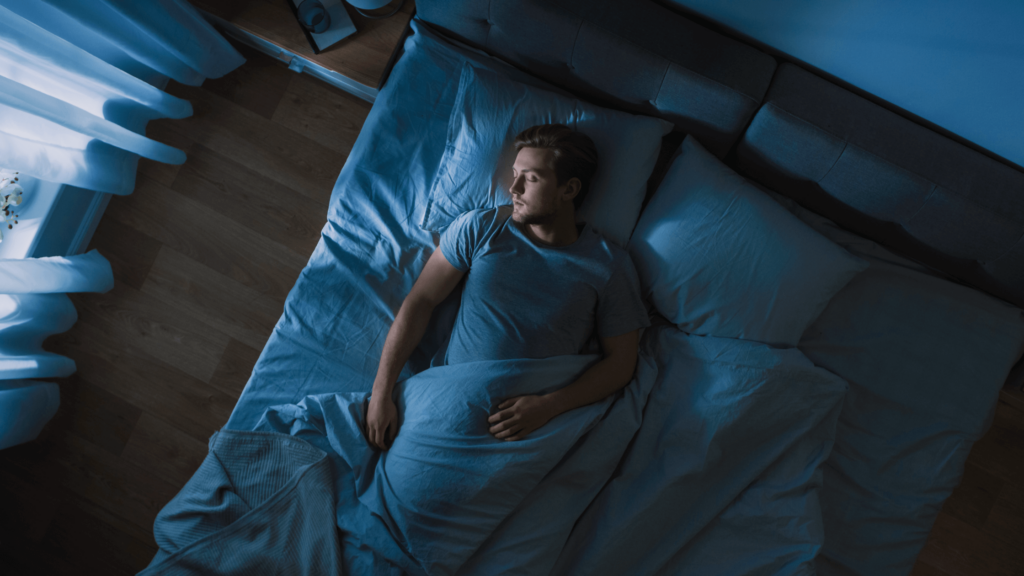Sleep is the fuel that powers your body and mind, especially when working long, physically demanding days on the job site. It keeps you sharp, safe, and ready to tackle the challenges of construction work, whether you’re operating heavy machinery or managing a project. But with stress, tight deadlines, and the constant grind, getting quality rest can often feel out of reach. Relaxation techniques like deep breathing and visualization can help you wind down after a long day, quiet your mind, and prepare your body for better sleep.
Sleep is a goldmine for health and longevity

Think of sleep as your body’s ultimate repair crew—it works overnight to heal, recharge, and keep everything running smoothly. Quality sleep isn’t just about feeling rested; it’s essential for overall health. It strengthens your immune system, improves memory, and even helps prevent chronic conditions like heart disease and diabetes.
Sleep plays a vital role in workplace safety and performance for those in construction. Operating heavy machinery, working at heights, or managing a team requires sharp focus and quick decision-making. Sleep deprivation can dull these critical skills, increasing the risk of accidents and injuries on the job site. The same holds for office workers, where concentration and efficiency take a serious hit without adequate rest.
When sleep takes a backseat, the consequences pile up. Chronic fatigue, slower reaction times, and poor judgment can lead to mistakes—and in construction, even small errors can have significant impacts. Studies have shown that workers who sleep less than seven hours a night are much more likely to experience accidents on-site. Overly sleepy employees are 70% more likely to be involved in workplace incidents than their well-rested colleagues.
It’s not just about feeling tired—it’s about how sleep deprivation impacts your focus, reaction times, and decision-making, all essential to staying safe on the job. That’s why making sleep a priority is so important. As with sleep supplements, relaxation techniques can help you wind down, get better rest, and reduce the risk of accidents, keeping you sharp and safe every day.
Prioritizing sleep is one of the smartest investments you can make, not just for your health but also for your productivity and safety at work.
Why you can’t sleep
Are you struggling to get a good night’s sleep? You’re not alone. Sleep issues can have a variety of causes, and identifying the root of the problem is the first step to finding solutions.
Stress and anxiety
It’s hard to shut your brain off after a tough day on the job site or juggling tight deadlines. Stress and anxiety can keep your mind racing long after the workday ends, making it difficult to relax enough to fall asleep. Worrying about tomorrow’s tasks or replaying today’s challenges in your head only adds fuel to the fire.
Environmental factors
Sometimes, the issue isn’t all in your head. A noisy neighborhood, bright streetlights, or a bedroom that’s too hot or cold can all disrupt your ability to fall and stay asleep. Even small things, like the glow of your phone or an uncomfortable mattress, can chip away at your sleep quality.
Poor sleep hygiene or irregular schedules
Bad habits around bedtime can make it harder to sleep, even when you’re exhausted. Irregular schedules—common in the architecture, engineering, and construction (AEC) sector—throw off your body’s natural sleep rhythms. Add late-night screen time or caffeine into the mix, and your sleep schedule can spiral out of control.
Medical conditions
For some, sleep struggles go beyond lifestyle factors. Conditions like insomnia or sleep apnea can prevent you from getting the rest your body needs. Sleep apnea, in particular, is common in physically demanding industries and can cause interruptions in breathing, leading to restless nights and fatigue during the day.
Relaxation techniques for better sleep
Relaxation techniques can work wonders to improve your sleep. They help calm the mind, ease physical tension, and prepare your body for rest. One of the simplest and most effective methods is deep breathing, which can be done anywhere without special tools. Here are a few popular techniques to try:
1. Deep breathing
Deep breathing helps activate your body’s relaxation response, slowing your heart rate and reducing stress. By focusing on your breath, you can quiet your mind and create a sense of calm that promotes better sleep.
Diaphragmatic breathing
Also known as belly breathing, this technique encourages you to take deep, full breaths using your diaphragm. Here’s how:
- Lie down in a comfortable position with one hand on your chest and the other on your belly.
- Inhale deeply through your nose, allowing your stomach to rise while keeping your chest still.
- Exhale slowly through your mouth, letting your stomach fall.
- Repeat for several minutes, focusing on the rhythm of your breathing.
Box breathing
This technique is great for calming an overactive mind, whether from lack of sleep or even from generalized anxiety. It’s used by everyone, from athletes to first responders, to handle stress. Try this:
- Inhale deeply through your nose for a count of four.
- Hold your breath for a count of four.
- Exhale slowly through your mouth for a count of four.
- Hold your breath again for a count of four.
- Repeat the cycle for several minutes.
4-7-8 Breathing
This method is designed to help you fall asleep quickly by slowing your heart rate and easing tension. Deep breathing is an easy yet powerful way to transition from the day’s chaos to a more peaceful state, setting the stage for a restful night. Follow these steps:
- Inhale through your nose for a count of four.
- Hold your breath for a count of seven.
- Exhale slowly through your mouth for a count of eight.
- Repeat the cycle for four breaths, gradually increasing as you get comfortable with the technique.
2. Progressive muscle relaxation
Progressive muscle relaxation (PMR) is a simple yet effective way to release tension from your body, one muscle group at a time. This technique can help you physically unwind by helping you notice where you’re holding stress and teaching your body to let it go. Here’s how to do it:
- Find a quiet, comfortable spot where you can sit or lie down.
- Start at your feet, tensing the muscles as tightly as possible for 5-10 seconds.
- Slowly release the tension while focusing on the sensation of relaxation.
- Move up through your body—calves, thighs, abdomen, chest, arms, and so on—repeating the process for each muscle group.
- Finish with your neck and face, paying extra attention to common areas of tension like your jaw and forehead.
3. Visualization
Visualization uses your imagination to create a calming mental environment, helping to quiet a racing mind and relax your body.
Body scan
A body scan is a mindful way to focus on each part of your body, releasing tension as you go:
- Close your eyes and take a few deep breaths to center yourself.
- Starting at your toes, slowly bring your attention to each body part, moving upward.
- Notice any areas of discomfort or tension and consciously relax them.
- Finish by focusing on your head and face, ensuring everything feels calm and relaxed.
Guided Imagery
Guided imagery involves picturing yourself in a serene setting, like a peaceful beach or a quiet forest:
- Close your eyes and imagine a place that feels safe and calming.
- Use all your senses to make the scene vivid—feel the sun’s warmth, hear the sound of waves, or smell fresh pine.
- Focus on this mental image as you breathe deeply, allowing yourself to feel fully immersed in the relaxation.
4. Self-hypnosis
Self-hypnosis is a powerful tool for relaxation and sleep. It involves using focused attention and suggestions to calm your mind. The key to self-hypnosis is practice. Over time, it can become a highly effective way to signal to your body and mind that it’s time to rest:
- Find a quiet, comfortable place where you won’t be interrupted.
- Close your eyes and take a few deep breaths, relaxing your body.
- Repeat a calming phrase or mantra, such as “I am relaxed and ready for sleep,” in your mind.
- Visualize yourself sinking deeper into relaxation with each breath.
- Allow yourself to drift into deep calm, releasing stress and tension.
5. Biofeedback
Biofeedback can be especially helpful for those who struggle with stress-related sleep issues, as it offers personalized tools for achieving calm. It leverages technology to help you gain control over your body’s stress responses. Devices track physiological functions like heart rate, breathing, and muscle tension, giving you real-time feedback to guide relaxation:
- Use a biofeedback device or app to monitor your stress indicators.
- Follow guided breathing exercises or relaxation techniques based on the feedback you receive.
- Practice regularly to learn how to naturally lower stress levels and promote better sleep.
Tips for relaxation exercises
Incorporating relaxation exercises into your nightly routine can make a world of difference, but like anything new, it takes time and a bit of experimentation. Here are some tips to help you get the most out of these techniques.
Find what works for you
Relaxation is not one-size-fits-all. Some people find deep breathing incredibly soothing, while others prefer visualization or progressive muscle relaxation. The key is to try out different techniques to see what resonates with you.
- Start with one or two methods, such as diaphragmatic breathing or guided imagery.
- Pay attention to how your body responds—does it feel easier to relax with specific techniques?
- Stick with what feels natural and effective for you.
Finding your go-to method will make integrating relaxation into your routine more manageable.
Don’t force it
Relaxation exercises should feel calming, not stressful. If one method doesn’t seem to work right away, don’t worry—it’s normal for these techniques to take time.
- Be patient and give yourself space to learn the practice.
- Avoid getting frustrated or pressuring yourself to relax “perfectly.”
- Remember, relaxation is about progress, not perfection.
With consistency, you’ll notice the benefits over time, even if it doesn’t feel immediate.
Combine with good sleep hygiene
Relaxation exercises are most effective when paired with habits that support a healthy sleep routine. Setting the stage for quality rest makes these techniques even more effective.
- Limit screen time before bed, as blue light can interfere with melatonin production.
- Create a calming bedtime routine, such as dimming the lights or listening to soft music.
- Stick to a consistent sleep schedule, even on weekends, to reinforce your body’s natural rhythms.
A few small changes can make a big impact on your ability to fall—and stay—asleep.
Bottom line
Quality sleep is essential for living your healthiest, most productive life. Relaxation techniques like deep breathing, progressive muscle relaxation, visualization, and even self-hypnosis can help you unwind, calm your mind, and prepare your body for rest. These simple yet powerful tools are not just about falling asleep faster but about improving your overall well-being.
Don’t wait for the perfect moment to start—experiment with these relaxation techniques today. A few minutes of relaxation can make all the difference in helping you wake up feeling refreshed and ready to tackle whatever the day throws your way.
Want to learn more? Subscribe to our weekly newsletter!



1 comment